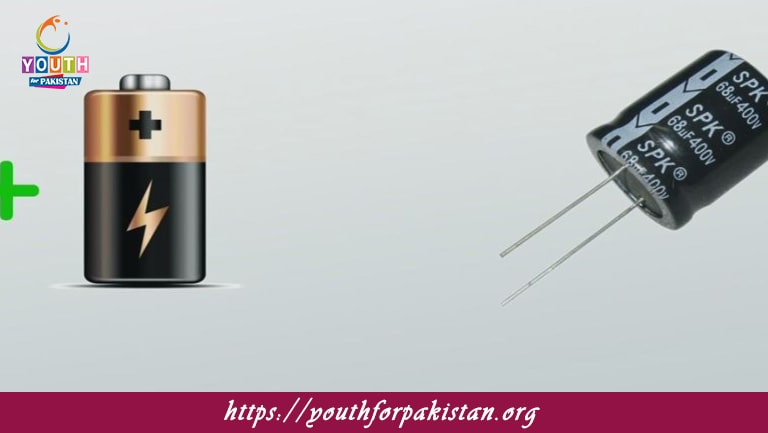Welcome to the Capacitance Of A Capacitor And Its Unit MDCAT MCQs with Answers. In this post, we have shared Capacitance Of A Capacitor And Its Unit Multiple Choice Questions and Answers for PMC MDCAT 2024. Each question in MDCAT Physics offers a chance to enhance your knowledge regarding Capacitance Of A Capacitor And Its Unit MCQs in this MDCAT Online Test.
Capacitance Of A Capacitor And Its Unit MDCAT MCQs Test Preparations
The unit of capacitance is:
A) Joule (J)
B) Volt (V)
C) Farad (F)
D) Coulomb (C)
A capacitor with a capacitance of 1 Farad is:
A) Very large
B) Very small
C) Average-sized
D) Theoretical
The capacitance of a capacitor is defined as:
A) The charge it stores per unit voltage
B) The energy it stores per unit voltage
C) The voltage it can handle
D) The current it can carry
If the voltage across a capacitor is doubled, the charge stored in it:
A) Doubles
B) Halves
C) Quadruples
D) Remains unchanged
The capacitance of a capacitor is measured in:
A) Ohms (Ω)
B) Amperes (A)
C) Farads (F)
D) Volts (V)
A capacitor has a capacitance of 10 μF. If the voltage is 5V, the charge stored is:
A) 0.05 C
B) 0.5 C
C) 0.05 μC
D) 0.5 μC
The dielectric material between the plates of a capacitor affects:
A) The capacitance
B) The voltage
C) The resistance
D) The current
A capacitor with a capacitance of 100 pF and a voltage of 20V stores a charge of:
A) 2 nC
B) 2 μC
C) 0.5 nC
D) 5 nC
Capacitance is inversely proportional to:
A) The distance between plates
B) The area of the plates
C) The charge stored
D) The voltage applied
If the dielectric constant
𝜅
κ of a capacitor is increased, the capacitance:
A) Increases
B) Decreases
C) Remains the same
D) Depends on the voltage
The unit of capacitance in the International System of Units (SI) is:
A) Coulomb per Volt (C/V)
B) Ampere per Volt (A/V)
C) Watt per Volt (W/V)
D) Farad (F)
The energy stored in a capacitor is:
A) Directly proportional to the capacitance
B) Inversely proportional to the capacitance
C) Directly proportional to the voltage
D) Inversely proportional to the voltage
The charge stored in a capacitor is:
A) Directly proportional to the capacitance
B) Inversely proportional to the capacitance
C) Directly proportional to the resistance
D) Inversely proportional to the voltage
A capacitor with a capacitance of 50 nF and a voltage of 12V has a charge of:
A) 0.6 μC
B) 6 μC
C) 0.6 nC
D) 6 nC
If the voltage across a capacitor is reduced, the charge stored:
A) Decreases
B) Increases
C) Remains the same
D) Doubles
The capacitance of a capacitor with an area of 1 m² and a separation of 1 cm is approximately:
A) 8.85 μF
B) 0.0885 μF
C) 8.85 pF
D) 0.0885 pF
A capacitor with a capacitance of 5 μF has a stored charge of 10 μC when connected to a voltage source. The voltage applied is:
A) 2V
B) 0.5V
C) 5V
D) 20V
In a series circuit, capacitors:
A) Combine as reciprocals of their capacitances
B) Combine by summing their capacitances
C) Have the same voltage across them
D) Have the same charge across them
In a parallel circuit, capacitors:
A) Combine by summing their capacitances
B) Combine as reciprocals of their capacitances
C) Have the same voltage across them
D) Have the same charge across them
The capacitance of a capacitor is affected by:
A) The size of the plates
B) The distance between the plates
C) The dielectric material
D) All of the above
The capacitance of a capacitor can be increased by:
A) Using a dielectric with a higher dielectric constant
B) Increasing the plate separation
C) Decreasing the plate area
D) Decreasing the dielectric constant
If the area of the plates of a capacitor is doubled while keeping the distance between them constant, the capacitance:
A) Doubles
B) Quadruples
C) Halves
D) Remains the same
The capacitance of a capacitor is:
A) Independent of the charge stored
B) Dependent on the charge stored
C) Independent of the voltage applied
D) Dependent on the voltage applied
The dielectric constant
𝜅
κ of a material is:
A) A measure of how much a dielectric material increases the capacitance
B) The ratio of the capacitance with dielectric to the capacitance without dielectric
C) The ratio of the electric field with dielectric to that without dielectric
D) The resistance of the dielectric material
The energy stored in a capacitor is:
A) Independent of the capacitance
B) Directly proportional to the capacitance
C) Inversely proportional to the capacitance
D) Directly proportional to the charge squared
If the separation between the plates of a capacitor is increased, the capacitance:
A) Decreases
B) Increases
C) Remains the same
D) Doubles
The capacitance of a capacitor is directly proportional to:
A) The area of the plates
B) The distance between the plates
C) The dielectric strength
D) The voltage applied
The unit of capacitance (Farad) is equivalent to:
A) Coulomb per Volt (C/V)
B) Joule per Ampere (J/A)
C) Ampere per Volt (A/V)
D) Volt per Coulomb (V/C)
A capacitor with a capacitance of 2 μF and a voltage of 10V stores a charge of:
A) 20 μC
B) 2 μC
C) 20 nC
D) 200 μC
If the voltage across a capacitor is halved, the charge stored:
A) Halves
B) Doubles
C) Remains unchanged
D) Quadruples
A capacitor with a capacitance of 500 pF and a voltage of 1V has a charge of:
A) 500 pC
B) 50 pC
C) 0.5 pC
D) 5 pC
If you are interested to enhance your knowledge regarding Physics, Chemistry, Computer, and Biology please click on the link of each category, you will be redirected to dedicated website for each category.








